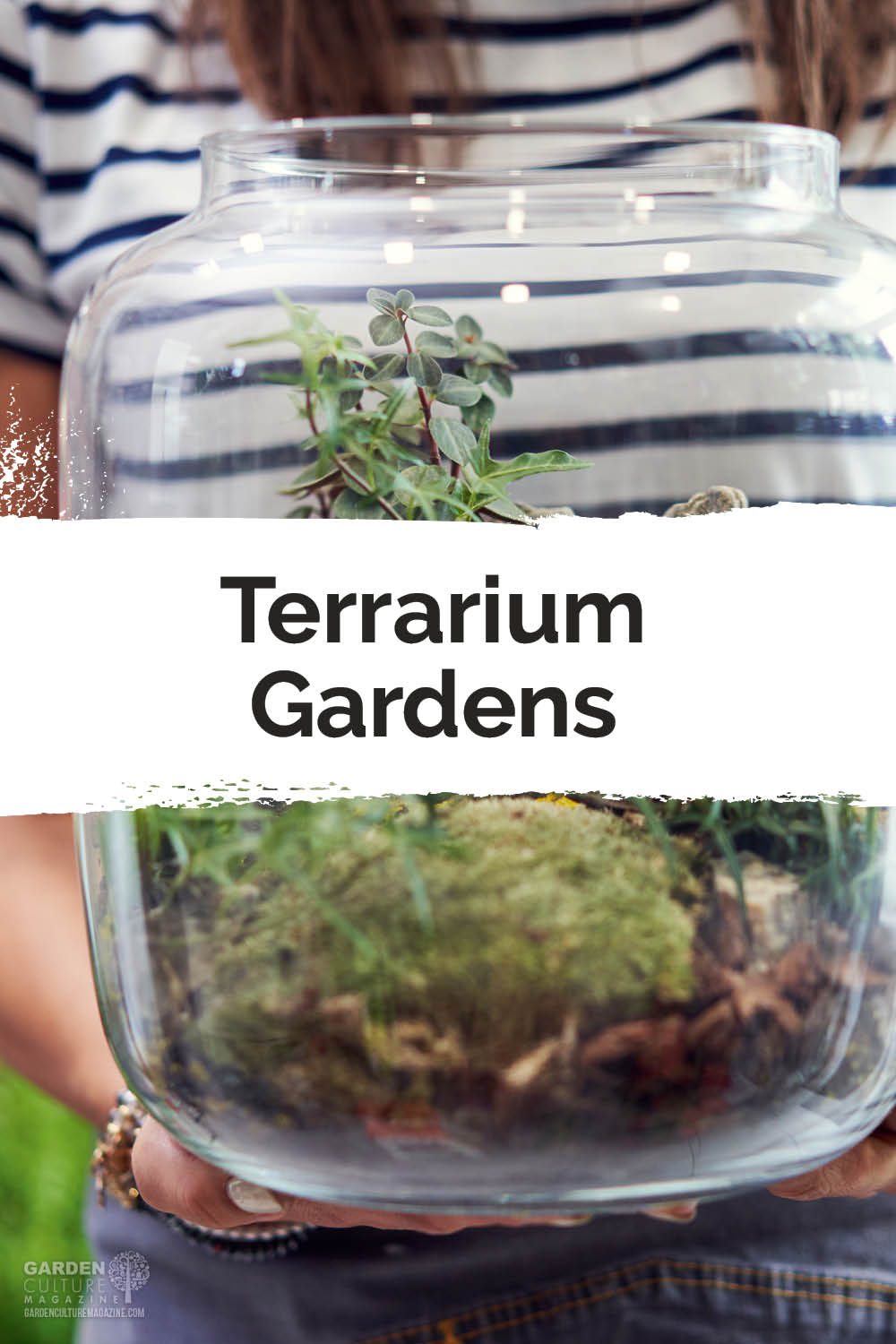When COVID-19 spread around the globe in March 2020, something changed in the world of gardening. Online nurseries and garden sites experienced a boom in traffic; people who had never gotten their hands dirty before wanted to find out what they could grow and how.
Being forced to remain in our homes, the practice of growing and nurturing plants became a remedy to the uncertainty and boredom of lockdown. It allowed people an escape, a way to fill time, and the chance to grow their food or improve their immediate environments with greenery. In May 2020, GlobalData market research rated gardening the second most popular lockdown pastime.
Physical and Mental Benefits of Terrarium Plants
There has never been more proof of the physical and mental health benefits; many converts say it helped ease the anxiety that came along with the pandemic. A recent Thrive (gardening for health charity) survey found that 43% of people agree that gardening helps their mental health, while 36% find that gardening keeps them healthy.
Another study published in the Journal of Physiological Anthropology (2015) states that close contact, such as touching and smelling plants, can reduce physical and mental stress. Even the soil in your terrarium can be beneficial as it contains outdoorphins. These are natural antidepressants that boost mood by releasing cytokines, which then tells the brain to produce more serotonin, the body’s ‘happy’ chemical. An article published in 2017 by environmental health expert Danica-Lea Larcombe suggests that plants can positively change the brain’s electrical activity and muscle tension.
Indoor Garden Trend: Terrariums
Unfortunately, not everyone, especially those living in cities, has an outdoor space for a garden. But that doesn’t mean that they have less potential to grow plants. On the contrary, houseplants and hydroponic systems flew off the shelves during the lockdown, and other indoor gardening trends have also taken off. Terrarium growing, for example, is experiencing some newfound popularity.
Terrariums are the perfect option for those just getting into gardening or who don’t have the time to maintain plants. It is possible to feel a sense of achievement from nurturing and watching tiny plants and microclimates evolve into something incredible.
Sealed and Unsealed
Terrariums are small, enclosed environments similar to mini-greenhouses in which you can grow a variety of things, including ferns, carnivorous plants, succulents, and dwarf palms. Terrariums are housed in glass or plastic containers and can be sealed or unsealed.
Sealed terrariums are self-nourishing and require little maintenance. They create their sustainable microclimates. The terrarium plants release water vapor, which then condensates and collects in droplets on the terrarium walls. Water then trickles back into the growing medium and is used by the plant before being recycled again.

Open terrariums need occasional watering, but nothing too extensive. They help with natural air purification by removing carbon dioxide from the atmosphere and releasing oxygen through photosynthesis. Some plant species can even remove toxins such as formaldehyde and benzene from the air.
Creative Control
Terrariums come with many unique advantages in gardening and interior design aesthetics, making them a versatile option for all homes. Designing and creating a terrarium gives gardeners complete creative control. In addition, they are available in all shapes and sizes, from big fishbowls to tiny bottles.
Ideal Microclimates
I have a sealed Biosphere terrarium that I love. It features a full spectrum LED light that mimics natural sunlight and guarantees healthy plant growth. Supplemental lighting makes the terrarium perfect for any space in the home, whether it’s a naturally sunny spot or a darker room like a bedroom or study. However, if using a terrarium without lights, many plant species will thrive in darker conditions, so no need to worry!
The microclimate you create, especially in a sealed terrarium, provides enough heat, light and humidity to allow all types of tropical plants, moss, and microorganisms to thrive. To further enhance the microclimate aesthetics, add some beautiful hardscape materials such as driftwood or amazonian rocks.
When winter arrives, even the most green-fingered among us can struggle to keep houseplants alive. However, inside the terrarium (especially in a sealed environment), it is summer all year round, and terrarium plants will thrive regardless of the season.
Moving Forward
The full impact of the global pandemic is still unknown. Still, the influx of enthusiastic and creative gardeners over the last 12 months marks an exciting time for horticulture. Let’s hope that the momentum keeps up and that we see the practice of growing terrarium plants at home, in whatever form possible, continues.
Did You Know?
We have terrariums to thank for the British tea obsession. Before the first type of terrarium was introduced in Victorian London, it had been almost impossible to grow Chinese tea plants outside China. During the mid-1800s, however, a British botanist named Robert Fortune successfully used Wardian cases to transport tea plants to India, where the Indian tea industry took off shortly after. By the mid-19th century, tea prices were so low that it had become the most popular drink of the British working class.
Share on Pinterest:
